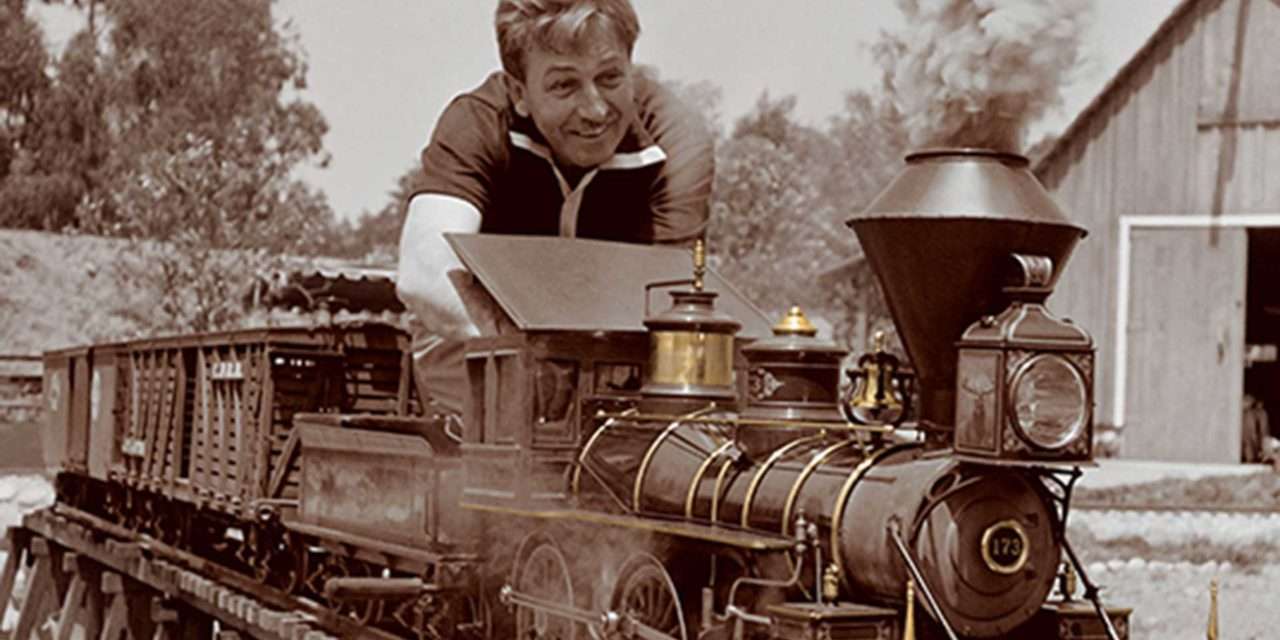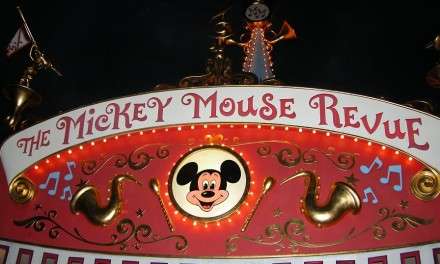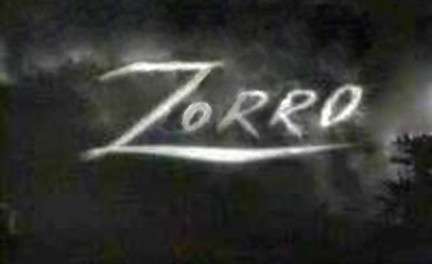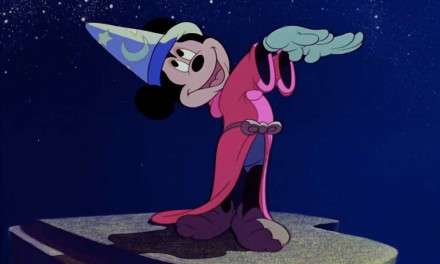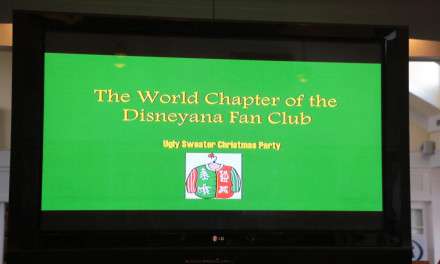Every Disney fan acknowledges that throughout his lifetime, Walt Disney always thought on a grandiose scale. Even as a child, Walt wanted to do it bigger and better than the other guy, and always put more than 100% in every endeavor he pursued. He was the first to perfect synchronized sound and voice to his Mickey short cartoons, the first to apply the 3-color strip Technicolor process to “Flowers and Trees” silly symphony cartoon, and in retrospect, take the biggest gamble of his career; in producing the first animated cartoon full-length feature film, “Snow White and the Seven Dwarfs” which even his wife Lillian and his Brother Roy thought would be his downfall. But Walt Disney was also a man who thought outside the proverbial box. Walt Disney early on became infatuated with the world of miniaturization, i.e. everyday items brought down to Lilliputian size, but with an attention to detail that was second to none. And believe it or not, it was Walt’s love of this miniature world that gave rise to, none other than Disneyland itself.
It is hard to pin down just when Walt became enamored with this pastime, but throughout his career, Walt had always looked for a hobby to help him forget, at least for a time, the pressures of the studio. He had tried Polo, golf, bowling but never settled on anything for long. One of his greatest hobbies was Railroading and his love of trains. This love actually transposed into why there is a train circling the Magic Kingdom. Walt in the early 30’s helped his nephew Roy E. Disney build a Lionel train layout, and more than probably was involved in building miniature props and accessories for the track.
More than likely, the impetus that got Walt into this demanding hobby was an exhibit he saw at the Golden Gate International Exposition, held at San Francisco’s Treasure Island in 1939-40. This was a World’s Fair, and among its many exhibits was one by Mrs. James Ward Thorne (Nee- Narcissa Niblack Thorne). Mrs. James Ward Thorne was additionally heir to the Montgomery Ward department store fortune. Mrs. Thorne too was an avid collector and displayer of miniature dioramas, utilizing Lilliputian objects of uncompromising detail. Her displays represented American and European rooms, all from different eras. The rooms were fashioned in such detail, most viewing them actually believed they were in that time period. Walt Disney was captivated, to say the least.
Walt’s interest in miniatures grew throughout his lifetime, and between his own creations and his worldwide collections, in the late 1960’s, his collection included more than a thousand pieces, comprising of paintings, books, eleven classic cars, a 1915 Model T Ford, 1903 Cadillac, 1904 Rambler, and a 1911 Rolls Royce. There was also a model battleship and steamboat. Included were musical instruments such as banjos, a mandolin, a guitar and an organ, crafted by conductor Frederick Stark. There was even a set of dueling pistols and a leather case with fourteen miniature six-shooters. It was an impressive display.
It was Walt Disney’s love of trains that started him into seriously creating these miniatures for himself. When he built his “Carolwood Pacific” 1/8 scale working steam railroad in his backyard, he almost single-handedly built the small caboose himself. This caboose sported miniature brass doorknobs, oil lamps, and spring latches. It was for this caboose that Walt made his first major piece…A pint-sized potbellied stove. He said… “I had a pattern made up, and it turned out so cute with the grate, shaker and door, and all the little working parts, I became intrigued with the idea,” Walt wrote. “I had a few made up: one was bronze, another black, and I even made a gold one! Then we made more and started painting them in motifs that fitted the period at the turn of the century.” The stoves were 5 ½ tall, and each had a different design. Walt made about one hundred; giving them out as gifts to friends, and even sent a few to an antique shop in New York, where Mrs. Thorne actually bought two for her own collection. He made no profit on the stoves, which he charged $25.00, he was just intrigued if they would sell. After, Walt said… “It has been fun making them and others appreciate them, too, so all in all, I feel well repaid,”
Although Walt was building small, he always thought big. These miniatures and tableaus gave Walt the idea of creating entire miniature worlds. He originated the idea of creating miniature scenes of life in an old Western Town. Walt conspired with animator Ken Anderson and told him his idea. He said…: “I’m tired of having everybody else around here do the drawing and the painting. I’m going to do something creative myself. I’m going to put you on my personal payroll, and I want you to draw twenty-four scenes of life in an old Western town. Then I’ll carve the figures and make the scenes in miniature. When we get enough of them made, we’ll send them out as a traveling exhibit. We’ll get an office here at the studio and you and I will be the only ones who’ll have keys.”
With the plans set in motion, Walt in addition to creating his own miniatures, began seeking out all kinds of miniatures for his dioramas. In order to keep prices becoming bloated because of his name, he asked Kathryn Gordon and Dolores Voght Schott, two secretaries at the studios to use their name. One ad read…
“WANTED: Anything in miniatures to a scale of 1 ½” to the foot or under. Up to and including early 1900’s. Give full description and price. Private collector. K. Gordon (and her address).” Over time, Walt had miniature tea services, wine and perfume bottles, silverware, candelabra’s, jugs and Wedgwood pitchers. The first scene Walt labored on was the cabin seen in the live action feature “So Dear to my Heart” This was the cabin Granny Kincaid lived in, and the detail was astounding. Inside was a braided rug, and the floor was made of planks the size of matchsticks. There was a spinning wheel, a guitar, a flintlock rifle was hanging on the wall and even a bible was set on the miniature table. Walt constructed the chimney out of pebbles he picked up at the Smoke Tree Ranch. Although Granny herself was never made, Walt had Beulah Bondi, the actress who portrayed Granny in the film, narrate on a recording, as Granny describing the inside scene.
This tableau gave rise to Walt’s idea of an Americana exhibit he called “Disneylandia”. He envisioned a complete western town, to be showcased around the country. The cabin was unveiled at the Festival of California Living in the Pan Pacific Auditorium in Los Angeles from November 28 to December 7, 1952, with the public’s positive reaction. A press release followed with Walt’s Disneylandia plan. In a 1953 interview, Walt explained… “This little cabin is part of a project I am working on, and it was exhibited as a test to obtain the public’s reaction to my plans for a complete village,” The second project in the works was a music hall stage, with a tap-dancing vaudevillian, which Walt called…” Project Little Man” Remember, this was before the perfection of audio animatronics. So, the studio filmed actor and dancer Buddy Ebsen dancing against a grid pattern for reference points. The figure was sculpted by Charles Cristadoro and was controlled by cams and gears. Unfortunately, Walt was not pleased with the carved face on the figure, he thought it lacked expression. The third display of a barbershop quartet, with a barber, customer and two patrons waiting was started by Walt and his technicians. But Imagineer Roger Broggie remembered… “We got as far as building the guy in the chair and the barber, Then the whole job was stopped!”
But as time rolled by, Walt came to the realization that this display would be viewed by a narrow audience, and the monies generated would not be enough to make the project profitable. But these miniature tableaus, although unrealized, gave Walt the spark for a real-life adventure, Disneyland! Roger Broggie remembered what Walt had said… “We’re going to do this thing for real!”.
As the plans for his Disneyland became more and more detailed, Roy O. Disney traveled to New York to solicit funds for this new “Theme Park”. Part of that spiel was a presentation of a “Lilliputian Land”, to be located between Fantasyland and Tomorrowland. This would be the tableaus that Walt never realized. Here is the original pitch… “Lilliputian Land. A land of Little Things…a miniature Americana village inhabited by mechanical people nine inches high who sing and dance and talk to you as you peek through the windows of their tiny shops and homes. In Lilliputian Land, there is an Erie Canal barge that takes you through the famous canals of the world, where you visit the scenic wonders of the world in miniature.
“Here a little diamond-stack locomotive engine seventeen inches high steams into the tiny railroad station. You sit on top of the Pullman coaches like Gulliver, and the little nine-inch engineer pulls back the throttle taking you on the biggest little ride in the land. And for the little people who have little appetites—you can get miniature ice cream cones or the world’s smallest hot-dog on a tiny bun.”
But this tiny land was never expounded, due to many factors. One attraction that Walt encountered in the Netherlands, called “Madurodam” was the idea behind a new attraction to replace Lilliputian Land. In Madurodam, prominent world landmarks were presented in miniature size. Walt went a step further and imagined “Storybook Land” to be placed in Fantasyland. This land would present locations from all his classic animation features, in miniature scale. Featured was the Seven Dwarfs Cottage, Mr. Toad’s mansion, and Gepetto’s Toy shop. Imagineer Ken Anderson was the overseer on the project and said… “It was one of Walt’s favorite rides. He’d make frequent visits to the model shop at the Burbank studio to provide comments and his expertise on the miniature models.”
Even after Disneyland’s opening, Walt never did lose his fascination with miniatures. During the planning for the ’65 World’s Fair, the Ford Pavilion’s Magic Skyway Rotunda entry was lacking an exhibit to showcase Ford as an international Company. Walt Disney immediately proposed a miniature village. The “International Gardens” display recreated buildings of celebrated landmarks from eleven countries. Walt supervised this work himself.
So, you can see that out of “Thinking small”, Walt Disney, as he has done all his life, created big and bold. The only thing that limited Walt’s grandiose ideas were perhaps the technology of the day. But as Disney fans worldwide observe every day at his theme parks, Walt’s ideas, bolstered by today’s high tech world, are just a big as Walt would have wanted!

